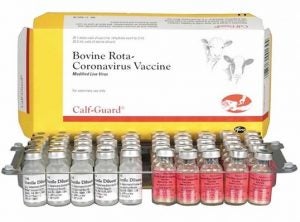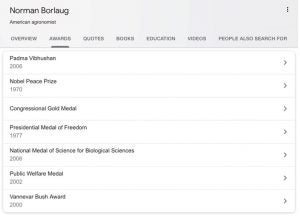The release of the first waves of the COVID-19 vaccine has marked the end of 2020 and the beginning of 2021 as an exciting time for science! So often we take for granted just how much we depend on modern medicine, doctors, and scientists for the well being of humanity; they deserve a lot of credit and praise for all that they do.
We can draw a scientific parallel to this idea by praising the science of agriculture, too. For example, did you know there has already been a coronavirus vaccine in effect for cattle? While “coronavirus” has taken on a new, specific meaning in the lexicon of 2020, the term actually applies to a broad family of viruses, which has been the focus of medical advances for years. Plus, cattle aren’t humans, so please don’t try that vaccine at home. But the science behind livestock vaccines is a fascinating one, along with the other scientific “fields” and the experts on whom farmers depend every day.

The pun-intended “field” science I’m thinking of is agronomy. Yes, agronomists can be a farmer’s best friend and offer them the ability to improve yields, maximize inputs and costs, prevent and cure disease, stop catastrophic insect infestation, and more. Just as we thank students who go into medicine, agronomists can be looked at as crop “doctors,” who assess problems in fields and write “prescriptions” to the farmer to save his or her crop. Farmers have thousands of diseases, insects, weeds, and other pest issues to deal with when it comes to their fields especially.
Agronomic practices can often make the difference when it comes to the success of a farming season.
When not managed properly, a farmer’s yield can quickly drop to zero should a devastating problem occur. A good example of this is the pink bollworm in the cotton industry. As explained by the USDA, “This pest has cost U.S. producers tens of millions of dollars in yearly control costs and yield losses. Thanks to rigorous control and regulatory activities carried out by the U.S. Department of Agriculture (USDA), state departments of agriculture, the U.S. cotton industry, and growers, pink bollworm has been eliminated from all cotton-producing areas in the continental United States. As a result, USDA is lifting the domestic quarantine for pink bollworm, relieving restrictions on the domestic and international movement of U.S. cotton.”
Agronomists scout fields, check nutrients and soil health, help create programs to improve water and soil quality, the list goes on. A majority of agronomy experts have high level degrees to offer pesticide recommendations and roll out plans to ensure top quality crop care. Bollworm eradication is an excellent example of how agronomists, plant breeders and scientists can work together to create a beautiful solution.
Future agronomists often take agricultural education, biology, and chemistry courses in high school before pursuing a bachelor’s or master’s degree in agronomy. According to AgCareers, “it is also advised that you receive and maintain your Certified Crop Advisor certification.”
Most of us reading this are familiar with Dr. Norman Borlaug. He is probably one of the world’s most famous agronomists and is credited with saving a billion lives from starvation. A recipient of the Nobel Prize and known as the “Father of the Green Revolution” of the 1970s, people such as Borlaug really are the heroes of our industry. Yet far too many people outside of agriculture have ever heard of him. A humanitarian who specialized in wheat problems and solutions, Borlaug has seen his work featured and recognized globally. (You can read more on him here.)

Farmers deserve a lot of credit and are responsible for feeding and clothing the world! However, behind every good farmer is a good agronomist and researchers on their team. Thank you, agriculture experts, for all you do for global food security.
Michelle Miller, the Farm Babe, is a farmer, public speaker and writer who has worked for years with row crops, beef cattle, and sheep. She believes education is key in bridging the gap between farmers and consumers.



